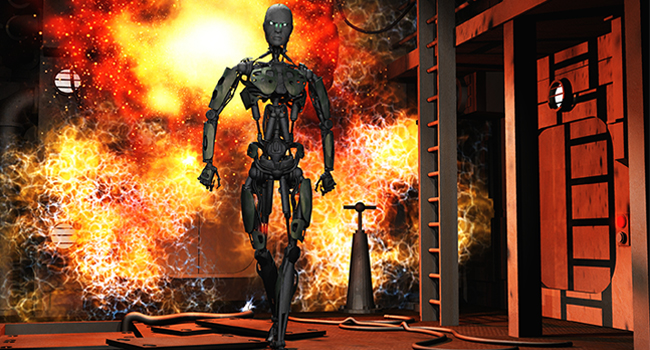
US Navy Introduces Firefighting Robot
- By Ginger Hill
- Feb 06, 2015
Standing at 5’10” tall and weighing in at 143 pounds is SAFFiR (Shipboard Autonomous Firefighting Robot), the US Navy’s firefighting humanoid, complete with infrared stereovision sensors, a rotating laser that allows it to see through dense smoke and a drone as a partner. Sounds a little like R2D2 and C3PO to me!
Developed by researchers at Virginia Tech, SAFFiR is unable to stand without a tether but can take measures steps while handling and operating a fire hose. (It must have amazing balance since water shoots out of a fire hose at such a high rate of speed that fire hoses have been used to knock people down during riots.) These movements, at this time, however, are human controlled.
SAFFiR’s drone partner, Damage Control Technologies, is a quadcopter, DC-21 with infrared sensors and cameras to detect fire and map out topography around the fire. DC-21 then communicates this data to SAFFiR.
By using the robot and drone, Thomas McKenna from the Office of Naval Research program manager identified the long-term goal is to keep sailors out of direct exposure to fire. The ultimate goal is for SAFFiR to work together with Navy officers as human-robot teams. McKenna identifies these teams as the “hybrid force, humans and robots working together.”
About the Author
Ginger Hill is Group Social Media Manager.